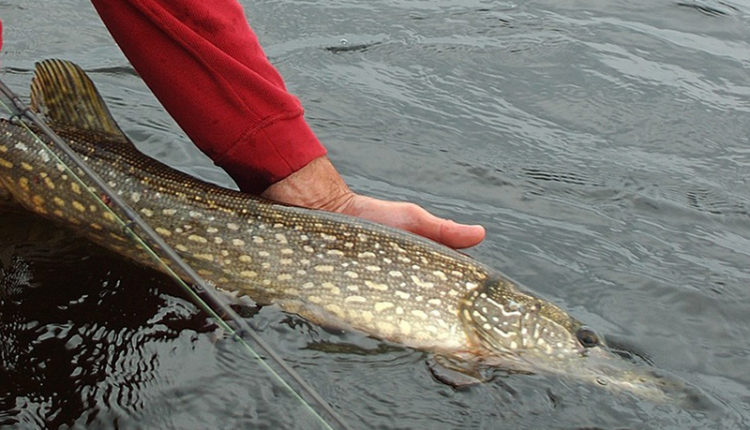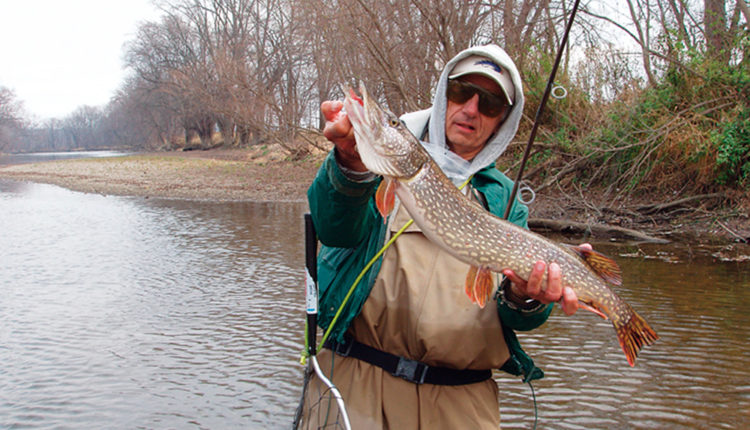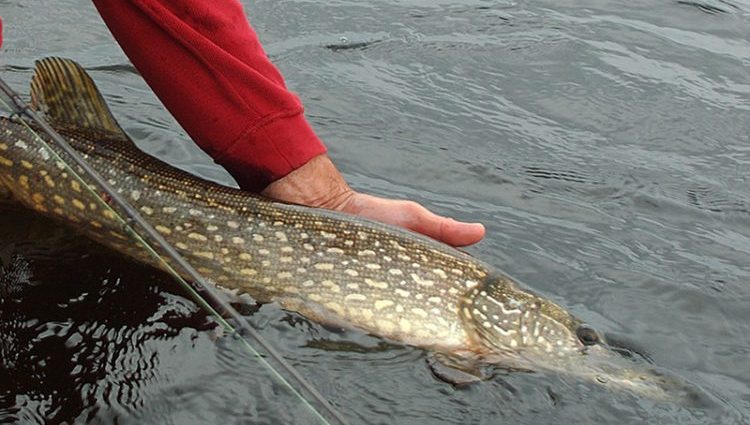Contents
It is believed that pike is a relatively sedentary fish, compared to the same perch, pike perch or asp. But sometimes it’s not easy to understand exactly where the toothy one is concentrating right now. Yesterday she was actively pecking on this edge, but today there is not a single blow here. Well, if we consider the entire season of open water, then the pike’s attachment to any specific points in general becomes very doubtful.
Sometimes it happens to catch pike in completely unexpected places, for example, in December aground. But if you forget about the exceptions, then the general patterns in the search for pike can still be traced. Search even on a familiar body of water depends on many factors. Moreover, it is necessary to take into account both global or seasonal (spring, summer, autumn, winter), when due to water temperature and oxygen content, the behavior of the pike changes radically, as well as daily, but no less significant: the presence and strength of the current, the rise or fall of water , wind direction, presence of signs of fry, overcast or sunny, etc., and most importantly, a combination of all these factors at the moment.
Searching for pike on a pond in spring
In reference to the seasons, let’s start with spring. March. Nature begins to wake up gradually, and the pike begins to stir. As the water warms up, it begins to move out of the areas of wintering pits to shallower areas. Increasingly, it pecks at the exits of the bays and at distant cordons, in the sense of the brows. And when the ice disappears, and the water level rises, it rushes to the water meadows to spawn. The flood and the spring ban dictate their terms, and at this time I completely switch to coastal fishing. I am looking for pike in bays, oxbow lakes, inlets and channels, lakes and ponds. The water here is cleaner and warms up faster, besides, there is no crazy current and you can always hide from strong winds, with which spring is so generous. Spawning is a difficult period not only for pike, but also for the fisherman, sometimes he bites, sometimes he doesn’t. Every year its exact dates are set by nature, but for pike it is usually April.

It should be borne in mind that these periods are also different in different reservoirs, somewhere the water warms up faster, somewhere slower, by the way, pike spawns at 4-6 degrees. The difference can reach several weeks and this can be used.
When it happened, for example, to be on your favorite rather deep lake, which is also connected to the river, in the midst of spawning and the pike had no time for food, then changing the place to a pond with depths of up to 3-4 meters had a positive result. There was already caught pike. An indicator of the beginning of spawning in such reservoirs for me is pike periodically plying along the coastline itself. If you do not make noise, then polarized glasses allow you to admire these beautiful fish. In the midst of spawning, they can already be observed in flooded meadows, where the depth barely reaches the knees. There will also be indirect signs: local natives in jerseys and with three-meter prisons. These foolish children do not even know what they are doing. So their great-grandfathers, grandfathers and fathers “fished”, respectively, and they adopted the experience.
During spawning, bites happen, yet even in one pond, pike spawn gradually, and not simultaneously, as if on command. First large, then medium, then small. But after spawning, the pike takes a vacation for a couple of weeks. The fishermen say he is sick. So catching her at this time is a thankless task. Only immature shoelaces are caught.
Where to look for pike in early summer
The end of May – June is the period of stable biting. The pike has fallen ill and begins to feed intensively, restoring its strength after spawning. After the ban is lifted, the search task is facilitated by the fact that you can fish from a boat. The water temperature is optimal, there are a lot of fry, aquatic vegetation rises and it is in it that it is easiest to find pike. The location of some fish fits literally in a nutshell: roll and asp, pit and catfish, grass and pike. Pike up to several kilograms is called by fishermen – grass, because its favorite habitats are thickets of water lilies, egg capsules, reeds, reeds and algae. Accordingly, the depths in such places are small and average 2-3 meters. Look for bigger fish deeper.

If the wind is decent, then you should not linger at the surf shore, all the garbage is blown here and the water is more muddy. From my observation, pike prefer the lee side when the wind is blowing at your back. At worst, a side wind, although if it is strong, it is much more difficult to catch. Avoids pike and strong currents, so on the rivers look first of all where lulls form. Breakaway jets, river turns, bays. As for the water level, fishermen have long noticed: water uphill – fish to the shore, water decline – fish in depth. The pike is not indifferent to the riffles, I caught it mainly with the front, at depths of 4-6 meters, especially if there are many local irregularities at the bottom. But great depths, more than ten meters, our heroine does not favor. It is much more likely to catch zander or catfish there. We also do not forget about coastal brows, dumps, and, of course, aquatic vegetation, snags, flooded bushes and trees. Here the pike, although smaller in size, but its concentration is much higher than on the fairway edges and fishing is much more exciting, especially when a strong wind makes it difficult to catch a big wave in open space. The grass often reveals itself with characteristic bursts and breakers, while the fry “splashes” in all directions. If bursts are periodically repeated here and there, then the pike is active, and you are in the right place at the right time.
At the height of summer, the bite noticeably decreases, and on especially hot days, the pike completely falls into a coma. At this time, it is more expedient to switch to more heat-loving ones, such as chub or asp.
Looking for pike habitats in autumn
Autumn is the most fertile time for a shukar. The water gradually cools down, and the pike noticeably becomes more active, showing all its ferocity. And if in the summer heat we catch mainly in the morning, then in autumn the pike takes well throughout the daylight hours, especially if the day turned out to be cloudy.

You can successfully catch it until the freeze-up. When aquatic vegetation dies, look for it deeper.
I had to catch pike in December, and in mild winters in January. But at this time it is necessary to catch in open water, according to the principle, where possible, but not where necessary. Most of the promising places are already under the ice. In addition, at low water temperatures, pike activity drops noticeably. And we have to look forward to the next round of nature. There are no clear instructions, which is why fishing is beautiful, which is free from all sorts of clichés and clichés. And the more you catch, the more often you encounter exceptions to the general rules.










